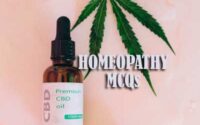Skin and V D Quiz
Skin and V D Quiz paper for the written examination is given below. Candidates who are looking for Skin and Venereal Disease exam Quiz paper can find in this section. The applied candidates who are getting prepared for the Skin and V D can view this page for the Skin and V D Last Ten Years Quiz Papers.

Download the Skin and V D Quiz & Solutions & make it as a reference for your exam preparation. Take advantage of these Skin and Venereal Disease Quiz Papers in a proper manner to get qualifying Marks. Last 5 years Skin and V D Quiz Papers provided here. Candidates who are applied for the above exam can check and download the Skin and V D Quiz Papers from here.
Quiz on Skin and V D
1. Which of the following concerning Degos disease in TRUE?
(1) After undergoing multiple stages, it resolves without scarring.
(2) It affects women more than men.
(3) Glucocorticoids are standard of care.
(4) GIT involvement pretends poor prognosis.
2. Silvery hair is present in which of the following syndromes?
(1) Chediak-Higashi syndrome
(2) Severe combined immunodeficiency
(3) Leukocyte adhesion deficiency
(4) Ataxia telangiectasia
3. Beau lines are seen in –
(1) Zinc deficiency
(2) Copper deficiency
(3) Magnesium deficiency
(4) Selenium deficiency
4. Which is the most common hair shaft disorder with breakage?
(1) Trichorrhexis nodosa
(2) Trichoschisis
(3) Pili Torti
(4) Trichorrhexis invaginata
5. Which is not true about Monilethrix?
(1) Inheritance is autosomal dominant
(2) Beaded hair appearance is pathognomonic
(3) Koilonychia may be present
(4) Mutation in type II hair keratins have been linked to chromosome 13 q11-q13
6. Cutaneous granulomas are a feature of all these conditions, except –
(1) Ataxia telangiectasia
(2) Chronic mucocutaneous candidiasis
(3) Common variable immunodeficiency
(4) Hyperimmunoglobulinemia E syndrome
7. For Incontinentia pigmenti which statement is not true?
(1) 1st described by Bloch-Sulzberger in 1906.
(2) It’s a X-linked dominant condition.
(3) 80% have mutation in IKBKG gene.
(4) It is lethal in male fetus.
8. Classical triad of Wiskott-Aldrich syndrome include all, except –
(1) Haemorrhage caused by thrombocytopenia and platelet dysfunction
(2) Recurrent candidiasis
(3) Recurrent pyogenic infections
(4) Recalcitrant dermatitis
9. All the statements about trichothiodystrophy are true, except –
(1) The term was coined by Price.
(2) Hairs are short, brittle with shaft abnormalities.
(3) Development delay is present.
(4) Photosensitivity is rare.
10. Poikiloderma with variegated cutaneous pigmentation, atrophy and telangiectasias is a hallmark feature of –
(1) Bloom’s syndrome
(2) Werner syndrome
(3) Rothmund-Thomson syndrome
(4) Fanconi Anemia
11. All are true regarding body temperature regulation, except –
(1) Pre-optic region of hypothalamus detect fall in temperature and activate para sympathetic system
(2) Adrenergic fibres responsible for flight or fight response
(3) During rise in core temperature there is inhibition of sympathetic system
(4) VIP Act as vasodilator and increase skin permeability
12. What is the first line of treatment of Mitchell disease?
(1) Lidocaine Patch
(2) Corticosteroid
(3) Calcineurin Inhibitor
(4) Topical Imiquimod
13. Which among the following is not true regarding PHN (Post Herpetic Neuralgia)?
(1) It occurs 3-6 months after herpes zoster infection
(2) Loss of function and degeneration of small efferent fibres
(3) Ectopic impulses can be evoked by thermal stimuli
(4) Increase in adrenergic sensitivity of nociceptors
14. A 54-year-old female comes to skin OPD with complain of burning sensation in mouth, dryness of mouth, changes in taste sensation since 1 year after wisdom teeth removal. Which of the following is True regarding this condition?
(1) This is a case of phantom tooth pain
(2) In it there is decrease of taste buds
(3) There is loss of inhibitory control over small afferent fibres
(4) In most patient, food and drinks increase the pain
15. Aquagenic pruritus after contact with water is seen in which hematological disorder?
(1) Chronic myeloid leukaemia
(2) Acute myeloid leukaemia
(3) Polycythemia vera
(4) Thrombocytosis
16. Mediator of Cholestatic Pruritus is –
(1) Histamine
(2) Cytokine IL-31
(3) Dynorphin
(4) Endorphins
17. Which of the following is not a method of measurement of pruritus?
(1) Verbal Rating Scale (VRS)
(2) Duration Rating Scale (DRS)
(3) Numerical Rating Scale (NRS)
(4) Visual Analogue Scale (VAS)
18. The term Prurigo Nodularis (PN) was first time used in the world by –
(1) William Augustus Hardaway (1879)
(2) Hutchinson (1879)
(3) James N. Hyde (1909)
(4) Hebra (1892)
19. Which of the following is not the common site of Lichen Simplex Chronicus?
(1) Nape and side of neck
(2) Lower legs
(3) Vulva and scrotum
(4) Flexor aspect of forearm
20. Specimen sign is seen in –
(1) Olfactory delusions
(2) Body dysmorphic disorder
(3) Nodular prurigo
(4) Delusional infestation
| Practice Set | MCQs |
| Quiz | Questions and Answers |
21. The antifungal drugs excreted in eccrine gland are all, except –
(1) Fluconazole
(2) Gmnseofulvin
(3) Ketoconazole
(4) Itraconazole
22. Which statement is true for chloracne?
(1) Tetrachlorodibenzo-p-dioxin is most potent chloracnegen.
(2) Inflammatory papule and cyst affecting predominantly nose.
(3) Sebaceous gland hyperplasia on histopathology.
(4) There is no systemic finding.
23. The prevalence of lupus pernio being associated with sarcoidosis of the upper respiratory tract is –
(1) Less than half of cases
(2) Half of cases
(3) More than half of cases
(4) None of the above
24. The false statement regarding the hormonal influences in hidradenitis suppurativa is –
(1) Premenstrual disease flares
(2) Improvement during pregnancy
(3) Circulating androgen levels are increased
(4) Clinical signs of visualization are usually absent
25. Pigmentary lesion characterized by typical macular area of depigmentation within area of hyperpigmentation giving a ‘Raindrop appearance’ is seen in –
(1) Arsenic poisoning
(2) Mercury poisoning
(3) Silver poisoning
(4) Gold salt poisoning
26. A preterm, small for date neonate with mask like face developed sudden onset diffuse yellow white woody induration with purplish mottling of surrounded skin with limited mobility of lower limb on day 5, on H/P examination, radial needle like cleft was seen. What is most likely diagnose?
(1) Scleroderma of Buschke
(2) Sclerema neonatorum
(3) Subcutaneous fat necrosis
(4) Neonatal cold injury
27. What is only FDA approved biologicals for treatment of hidradenitis suppurativa?
(1) Adalimumab
(2) Ustekinumab
(3) Rituximab
(4) Omalizumab
28. Borrelia burgdorferi has been implicated in pathogenesis of –
(1) Anetoderma
(2) Mid-dermal elastolysis
(3) Atrophoderma of Pasini and Pierini
(4) Atrophoderma vermiculatum
29. Conditions associated with acquired perforating Dermatosis include all, except –
(1) Chronic kidney disease
(2) Scabies
(3) Hypertrophic cardiomyopathy
(4) Diabetes mellitus
30. Histologically all these forms of panniculitus are lobular forms, except –
(1) Erythema induratum
(2) Erythema nodosum
(3) Pancreatic panniculitis
(4) Cytophagic histiocytic panniculitis
31. Meltzer triad include all, except –
(1) Acrocyanosis
(2) Purpura
(3) Asthenia
(4) Arthralgia
32. A 16-year-old complain of palpable non blanching purpuric rash on upper and lower extremity since 4 days. Patient has complain of abdominal pain in right upper quadrant, on investigation WBC was raised, while others were normal. On skin biopsy leukocytoclastic vasculitis is seen. Which statement is false for this disease?
(1) The peak incidence of this condition is between 4-6 year.
(2) IgA is key antibody is pathogenesis.
(3) Antistreptolysin ‘O’ titre positivity confirm a 10 fold risk of IgA vasculitis.
(4) End stage renal disease is common complication of diseases and occur in 90% of affected patient.
33. Schobinger staging system is used for –
(1) A-V malformation
(2) Venous ulcer
(3) Atherosclerosis
(4) Venous malformation
34. Which statement is false?
(1) Cherry angioma are common angioma seen in skin and are true capillary hemangioma.
(2) Angiokeratoma are not true angioma.
(3) Angioma serpiginosum is always blanchable.
(4) Generalized essential telangiectasia is usually symmetrical.
35. A boy of 8 year presented with purpuric rashes in both lower limbs with complaint of joint pain in knee and pain in abdomen. H/P finding is likely –
(1) IgE deposition in vessel wall
(2) IgG deposition in vessel wall
(3) IgA deposition in vessel wall
(4) C3 complement around vessel wall
36. What is talon noir?
(1) It is superficial fungal infection
(2) Pigmentation of heel due to extravasation of RBC
(3) Sign of Arsenic poisoning
(4) Also known as piezogenic pedal papule
37. Sneddon syndrome is associated with all of the following, except –
(1) Livedoid vasculopathy
(2) Ischemic cerebrovascular lesions
(3) Hypertension
(4) Arterial and venous thrombosis
38. Which of the following vasculitis doesn’t predominately affect small blood vessels?
(1) Cryoglobulinemia
(2) HSP
(3) Polyarteritis nodosa
(4) ANCA associated
39. Treatment of choice for Kawasaki’s disease is –
(1) IVIG
(2) IV corticosteroids
(3) Aspirin
(4) Methotrexate
40. Sequence of events in Raynaud’s phenomenon includes –
(1) Erythema – Cyanosis – Pallor
(2) Pallor – Cyanosis – Erythema
(3) Cyanosis – Pallor – Erythema
(4) Erythema – Pallor – Cyanosis
41. By what age 100% boys have retractable foreskin?
(1) At Birth
(2) At 1 year
(3) At 15 years
(4) At 17 years
42. Lozenge shape keratinocyte is found in which condition?
(1) Darier Disease
(2) Hailey-Hailey Disease
(3) Zoon Balanitis
(4) Pemphigus disorder
43. A 12-day-old baby had hypothermic cardiac surgery and one month later, the baby developed nodules of rubber consistency all over body. What is most likely diagnosis?
(1) Cold panniculitis
(2) Sclerema neonatorum
(3) Subcutaneous fat necrosis
(4) Neonatal cold injury
44. Perjanal ulceration is a complication of which drug?
(1) Amiodarone
(2) Nicorandil
(3) Verapamil
(4) Ivabradine
45. Which statement is correct regarding carcinoma in-situ of penis?
(1) Risk of progression to invasive squamous cell carcinoma is 10-33%.
(2) HPV 6 is most important factor in carcinoma in-situ.
(3) Spontaneous regression is not seen.
(4) Short foreskin is a risk factor for squamous cell carcinoma.



